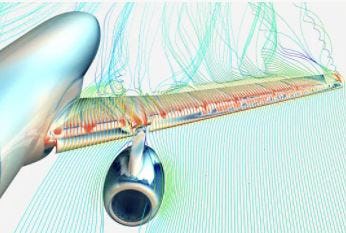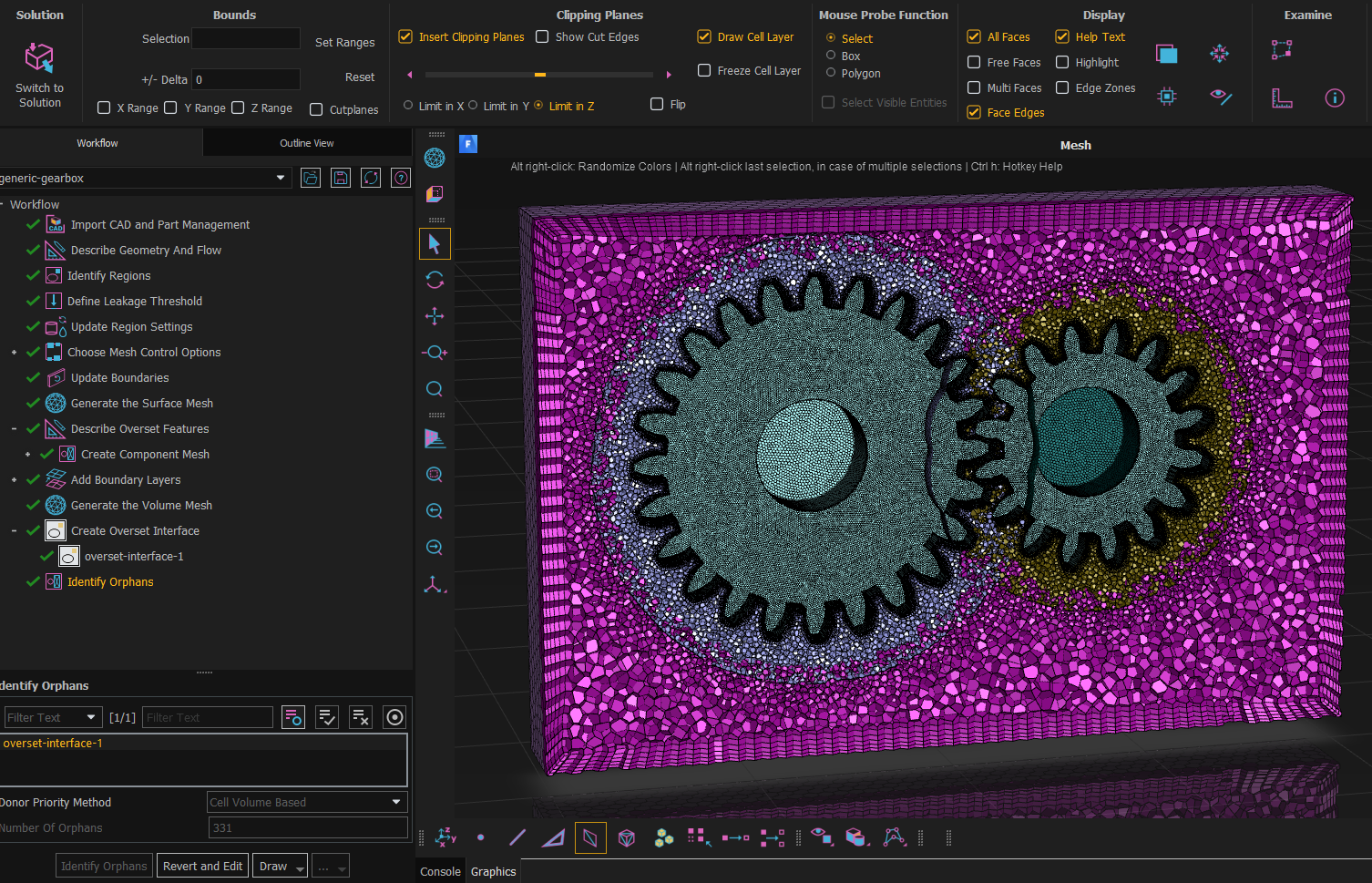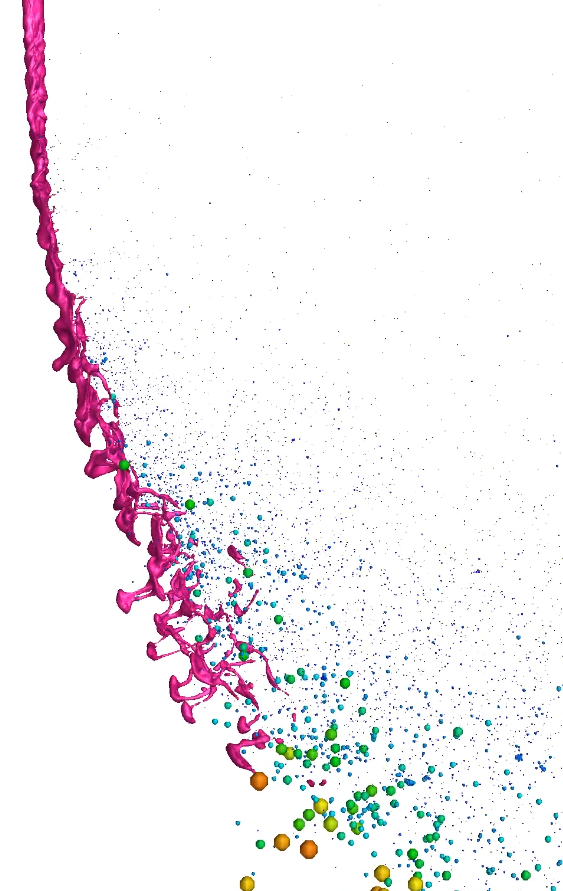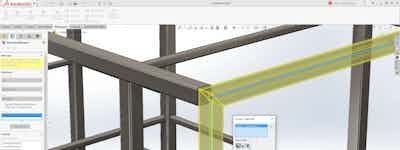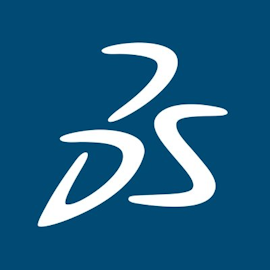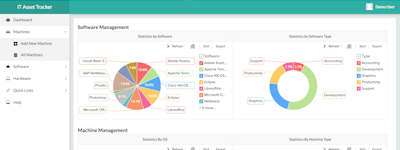기업의 더 효율적인 소프트웨어
선택을 위한 17년 지원 경험
Ansys Fluent
Ansys Fluent은(는) 무엇인가요?
Ansys Fluent는 고급 물리 모델링 기능과 업계 최고의 정확도로 잘 알려진 업계 최고의 컴퓨터 유체 역학(CFD) 소프트웨어입니다. Fluent를 사용하면 제품 성능 혁신과 최적화에 더 많은 시간을 할애할 수 있습니다. 다양한 응용 분야에서 광범위하게 검증된 소프트웨어를 통해 시뮬레이션 결과를 신뢰할 수 있습니다.
Ansys Fluent은(는) 누가 사용하나요?
엔지니어, 제조 엔지니어, 분석가, 적층 기술자를 대상으로 합니다.
Ansys Fluent에 대해 확실하지 않으세요?
인기 있는 대안 제품과 비교

Ansys Fluent
Ansys Fluent 리뷰

Best tool for CFD Simulation
주석: I have been utilizing ANSYS Fluent for more than 6 years. I use it to simulate various problems in the field of solar thermal energy. I am extremely satisfied with ANSYS Fluent because there are many examples available on websites and forums. In addition, there are colleagues and experts who answer to various questions that help us to analyse, create, solve and develop our model. I strongly recommend scientists and engineers use it.
장점:
ANSYS Fluent is the greatest software for Computational Fluid Dynamics simulations. It comes with a number of add-ons that are incredibly useful for product research and development. Researchers and engineers could also customize the simulation by changing the input parameters needed to solve the problem under consideration (starting by creating geometry, then generating mesh, Setup the parameters, and extract results). One of its advantages is that it provides acceptable and satisfactory outcomes that are accurate and close to the experiment.
단점:
The software is difficult and requires a lot of understanding before starting up. You would first comprehend the relevant variables in order to achieve the required result. In addition, it's open source version has very limited number of cells/nodes. On the other hand, the premium version required a high-end computer (could be costly), take significantly longer to solve the problem and achieve the desired results.

고려된 대안:
An indispensable flow modeling tool
주석: When it comes to computer aided analysis tools, there are not too many solutions available in the market. Ansys has been the market leader in this domain for quite sometime now, and it has consistently been rated the best. Our organisation has derived several benefits with Ansys, and it integrates well with most of the modelling softwares and PLM platforms.
장점:
I have used Ansys Fluent for modeling fluid flows for aerospace applications. I particularly like the feature set that Ansys provides. It also has support for distributed computing architecture which has been very beneficial in meshing and processing complex one dimensional CAE problems.
단점:
There are multiple UI improvements with each product release. Keeping pace with the changes and new functionalities is a bit of a learning curve. The rendering of 3D heat maps and stress diagrams is a bit choppy with certain older generation GPUs.
Always prefer STAR-CCM+ over Ansys Fluent
주석:
(Ran out of space from above question, so continuing here)
which should not be the case, as it is 2022 and opening a website for reading instructions should be the most easily available thing.
6) If there is only one or two persons who answer the questions on probably a 1000 + strong or more community on the forum, you definitely need more people who could man the ansys forum. Most of the time, the answers are actually more questions, which rather point on to 1 or 2 simple things or, a new question alltogether, making the whole process of going to the forum, quite useless.
And if by any chance, the question is tricky enough, they direct to open the ticket, which takes another god knows how many days, with response that "I will get back to you soon" and this soon comes withint 1 month or so, not with answers , but with more questions.
7) Also had the privilage to get a 850£ subscription to the training page, which was such a bad design. (Why don't you hire a better UI designer?), and finding data on the same was very challenging. One also needs to write email to that lady quite often, to ask for stuff, and this should not be the case. After all , for what exactly did I pay 850£ for?
The training portal, is also suppose to be self-explainatory with the new versions of pdf, however, it sometimes seems, the pdfs were never updated, and I wished again for Star-CCM+.
8) So if I have to write script, scheme is the last language I would do it with because it is not 1960.
장점:
used v19R2, did the basic CFD, however, meshing on a simple geometry such as rounded pipe, seemed like a hassle. So you tell me if there is even worth going forward.
단점:
Where do I start. 1) The customer support, is now directed to the ansys forum, which I am sure, some indians are doing a good job on it, however, its a very badly maintained source. The previous version of going to portal and looking for a pdf (assuming due to some blessing, it is available), was a better approach. If you cannot open a file, becuase someone is trying to send a snapshot, then please find it in your heart to buy a better anti-virus software. I am sure such a big company such as ansys can open an attachment, if it cant get everyone through the ticketing system, which by the way, is also not very useful, or so late, that the user, ends interest, or endures to find a new method, which does not require the crappy customer support of Fluent. I am guessing that is a win win for Ansys fluent anyways. 3) The ticketing system, never was useful, as I said, needed to couple fluent with python, for v19R2, and appraently, that feature is not made yet. These are the times I wished, my supervisors had agreed on Star-CCM+, instead of fluent. 4) If something has been discontinued, or will be discontinued, take it out from the list of radio buttons or drop down menus. It is simple software engineering basic. 5) Also, again, I wished, the customer portal, were open to more appropriate documentation when required. Putting up everything online in form of instructions manual was a bad decision. Also, i am pretty sure, you had not notice, that the website, opens slowly,
Ansys Fluent: thermo-fluid dynamic simulations within reach of (almost) everyone
주석:
My experience with Ansys Fluent is very positive. In particular, I used it during the PhD path mainly for the shape optimization of the cardiac bypass. It responded very well to the parametric study and I did not find it difficult to integrate with other software.
Thanks to its ease of use it allows a fast progress of the works, which allowed me to publish several scientific-numerical papers.
It is also excellent for newcomers to simulations because, even if you are not very well prepared on the fluid dynamics and / or thermal theory, you can get relevant results.
장점:
The software, in the Workbench functionality, allows to decide the type of module to use depending on the physics to be solved. In particular, among the different choices for the fluid dynamics part, there is Fluent, a Finite Volume solver. It is very intuitive to import external CADs into the geometry module and prepare the mesh accordingly. The internal CAD is also very functional and, for complex components, it is useful for cleaning geometry. The preparation of the solver is also very intuitive. The tree diagram allows to not make mistakes. Very good package for displaying the results data, which is intuitive and easy to use. Among the best features that have been implemented in the latest versions is the "Named Function": a tool inside the solver part that allows to define mathematical functions, and much more, in order to bypass the use of UDFs which is always a bit difficult and not easy to understand. Exporting data is very easy since you prefer to use another software viewer or perform numeric post-processing operations with Matlab as an example.
단점:
The hardest part of the program is the definition of the mesh. if you work with simple geometries you will not encounter particular problems, but since you want to use polygonal meshes for complex geometries, you have to use another package that integrates the mesh with the solver in a different way. The use of different packages for the management of the single parts makes the program heavy, which is slow in the opening and closing phases of the single packages. Another slightly critical point is the definition of the parameters. It is not easy to understand and you have to manage them through the Workbanch. This is not a particular problem once you are familiar with the program.

Why Ansys Fluent?
주석: I used Ansys Fluent to simulate heat exchange using a heat pipe filled with various types of nanofluids.
장점:
When the appropriate parameters are included, it aids in simulating fluid behavior. This was an excellent way to double-check the results of an experiment. Heat transfer, laminar flow, and turbulent flow can all be simulated. You can learn how to use it for minor tasks in less than two months. I particularly like the variety of data and model file extensions it supports; for example, you can import data from Excel and SolidWorks or cad files. I like how the application generates a report automatically at the end of the problem-solving process.
단점:
It's a complicated program that necessitates a great deal of knowledge before you can use it. To achieve the desired result, you must first understand the necessary parameters. It also has a high price tag, much higher than comparable applications. It also has minimal system requirements, which means you'll need a high-end laptop, which can be expensive (it can work on low specs devices, but it will take much more time to solve the problem and get the results you are seeking)

Ansys Fluent Review
주석: Ansys Fluent is a generally acceptable simulation tool for computational fluid dynamics related problems. With ability to carry out multiphysics simulations and element quality check in meshing, Fluent is my most preferred and effective tool in its class.
장점:
The efficiency of its results make Ansys Fluent the most effective tool for solving computational fluid dynamics related problems. From geometry, through meshing, physics, solution and to results, the chronological order of the workflow makes Fluent easy to use, even for beginners. The fact that a user doesn't necessarily need to fully understand the governing equations required in the setup makes the learning curve less steep. A user with a deeper understanding however, can create and modify user defined functions to suit whatever solution that may be required.
단점:
There are minimum requirements to install and run Ansys generally but at times, even those minimum requirements seem to be incapable of a ensuring a smooth run. So it is prone to crashes and may require extremely long period of time to solve some complex problems. A high end computer might be required for such. Eventhough it is easy to use, a good knowledge of physics or engineering is usually required of the user to understand some processes. Also, the solver offers the user less control of the solving process as compared to some other tools.
Best Tool for CFD Simulation
주석: I have been using ANSYS Fluent for 5 years so far. I use it in all my CFD simulation and I have been very satisfied with it. I definitely recommend researcher to use it if available through their institutions.
장점:
In my opinion ANSYS Fluent is the best software for CFD simulations. It has several add-ons that are extremely helpful for design and product development. It also offers engineers and researchers a lot of flexibility in terms of equations (flow, energy, and turbulence) and boundary conditions to setup the simulation as customizable as possible.
단점:
What I don't like very much about ANSYS Fluent is the file management. I have had a hard time finding the files I save specially when the software crashes. Hopefully, with the newest updates ANSYS will fix these bugs.
Excellent
주석: For general purpose... Ansys is the best... for particular and more material specific analysis ( like i designed my in composite and tested the equallent model on that) its not that accurate
장점:
Best for simpler and small scale FEM analysis... can also work for Solidworks imported mesh.. thats a plus and helpful for me
단점:
Just a bit slow.... requires more processor. But that isnt a drawback because FEM software have to calculate value on each node so in refined mesh they are compelled to require time.
fluent flow simulations
주석: With the Fluent software, I generally made pipe internal flow analyzes and examined the heat transfer with the effect of temperature and flow rate. I also had the opportunity to examine the flow profiles of aircraft wing structures.
장점:
Ansys fluent provides the opportunity to easily solve multiple physics problems in different physics situations with flow simulations. It is especially solution-oriented in examining the interaction of multiphysical flows with each other. FSI contributes to the strength analysis of flow-borne structures by transferring the values of the flow results (such as temperature, pressure) to the structural side for the solution.
단점:
Since Fluent software depends on the geometry to form the finite element mesh structure of the flow volume, it takes a long time to clean the geometries.

Robust CFD Solver
주석: I used Fluent in the automotive and aviation industries. I have more than 7 years for the application that I have used Fluent.
장점:
Fluent has numerous options to solve various types of flow. It produces fast and accurate results. According to comparison with experimental results, CFD results satisfy the researcher most of the time.
단점:
The software does not allow the user to modify the source code. It has some features to modify some interface but is not desirable for every researcher.
Ansys Fluent: A Reliable Tool
주석: Overall, I would highly recommend Ansys Fluent to anyone in need of a powerful, reliable simulation software. Its complete documentation and well-described equations make it a valuable asset for any project, especially those involving multiphase flow simulation or critical flow of gas through tight restrictions.Despite these limitations, I still believe that Ansys Fluent is a valuable tool for simulating complex systems. Its reliability and versatility make it a valuable asset for engineers, researchers, and scientists working in a variety of fields. However, it's important to be aware of its limitations and potential challenges in order to make the most of the software's capabilities.
장점:
I have been using Ansys Fluent for some time now, and I am very impressed with its capabilities. As someone who regularly deals with multiphase flow simulation and critical flow of gas through tight restriction, I have found this software to be particularly useful.One of the things I appreciate most about Ansys Fluent is its reliability. The software has consistently delivered accurate results for a variety of complex simulations. Additionally, the documentation is complete with well-described equations, which has made it easy to set up and solve even the most challenging problems.Ansys Fluent is especially helpful for simulating multiphase flows, such as gas-liquid interactions, and for modeling critical flow of gas through tight restrictions. It allows for accurate modeling of these systems and provides valuable insight into their behavior and performance.Another advantage of using Ansys Fluent is its versatility. The software is capable of modeling a wide range of physical phenomena, including fluid dynamics, heat transfer, combustion, and more. This makes it a valuable tool for engineers, researchers, and scientists working in a variety of fields.
단점:
One challenge I have encountered is that errors can be confusing, with little explanation provided. When an error occurs, it can be difficult to determine what caused it, and there may be limited guidance available to help troubleshoot the issue. This can be frustrating for users who are trying to identify and fix problems in their simulations.Additionally, I have found that some of the software's features can be less intuitive than others. While Ansys Fluent is generally user-friendly, there are some aspects of the program that may require additional research or support to fully understand and utilize.
My Love-Hate Relationship with Ansys Fluent
주석: Overall, Ansys Fluent is an incredibly useful tool for simulation, but it comes with a steep learning curve. If you're willing to put in the time and effort to learn it, the results are well worth it.
장점:
As someone who used Ansys Fluent during my PhD studies for air quality, I found it to be a powerful but complicated simulation software. One of the best things about Fluent is that it allows you to create your 3D geometry using other software and save it in a format that Fluent can read, saving you the trouble of learning how to model in different software. The results provided by Fluent are excellent and provide a wealth of data for analysis, including animations and various plots.
단점:
While it has a user-friendly interface, it takes a lot of time to learn and is not very intuitive. I highly recommend trying some tutorials before diving in. Also, running complex simulations with a mesh of millions of elements requires a powerful cluster and can take a long time. The results are great, however, it's not always easy to get there. Errors often appear during the learning process, but the software has a strong community of users, open forums, and assistance to rely on.
Fluent solutions by "Fluent" for heat transfer problems
주석: The interface is smooth and is kept up to date to the modern industrial problems, but some times the frequent updates of software keeps the simulations run in the earlier versions unviable.
장점:
Working in heat transfer domain, the software offers plethora of options for different types of thermal management techniques. The interactive user interface allows user to navigate through the options at ease and tutorial support offered gives additional boost to new entrants in the software
단점:
Some times the intrinsic details that needs to be tweaked based on experimental conditions remain stubborn and unrealistic causing the software to deviate from the outputs intended from a set of conditions
Review
주석:
Mixed.
I appreciate the software's technical capability and support from customer support team has been very good, but the solver can be a real pain to run at hypersonic speeds at times if there is any amount iof divergence from primitive geometry.
장점:
The price is good and there is a good deal of physical model functionality from low to hypersonic. Significant V&V has been done. I like the Fluent AERO capability that is being rolled out to do sweeps of AoA, Mach, etc.
단점:
The software is very difficult to apply - significant amount of time needs invested in meshing. Other solvers (e.g. CDD++) are much easier to run successfully (i.e. quickly get solve an analysis). Find that other colvers are more capable numerically of running in the hypersonic regime. Fluent capability of integrating with Pointwise meshes that I receive from my customer is not great. Sometimes the technical support is good, other times can be a bit distant. Support received from other vendors is more engaged and actively trying to help (i.e. hands on).
ANSYS Fluent helps us to make our processes more efficient and Environnemental friendly
주석: ANSYS Fluent proposes an efficient post processing tool, and link is possible with 3D virtual reality devices to enter directly inside the modeled system to see each details of results.
장점:
ANSYS Fluent gather most of physical phenomenums to correctly models our various processes, and the possibility to add our own models allows us to perform specific simulations.
단점:
Price is rather high compare to other products (some of them are free), and modelization of big processes needs big computers.
Excellent
주석: Best value for money for general usage.
장점:
I have been working on Fins of a heat exchanger lately. The thing that impressed me alot, was that i can apply the thermal as well as fluiddynamic analysis on a very wide range of materials. the long list of materials impressed me. Secondly, the simplified mesh was very easy to construct on ANSYS.
단점:
Not that easy to use. It took me a while to get used to stuff. Secondly while load testing, abaqus was more handy. even solidwork was equally good plus there was an additional advantage of easy (as well as complex) modelling.
Simulation means ANSYS
주석: Superb I learned lot as software learning is better then book learning.
장점:
I am a mechanical engineer with a focus of fluid simulation and I have to deal with a lot of simulation softwares. But ANSYS is one of the best software I have used so far. It is very user-friendly and the interface is very convenient to understand. Workbench gives me variety of options to do the relevant simulations. Fluent is design in step by step manner like meshing, parameter design, Boundary condition, initialization, simulation and results. The whole sequence of processes is in chronological order and it is very easy to project the mistakes as well as the cloud holes in this software. Ansys can simulate a huge as well as micro system in a quite stable way. Variety of files can be saved and get by Ansys software which includes excel, csv, pdf etc. Also almost all design software files are supported at Fluent interface.
단점:
Ansys should increase the meshing range and simulation capacity for the student version. I own a student version of Ansys which is free for students of my university. Secondly, the files storage by the ansys software especially when a video simulation is required is too high. Some considerable. Rar files are recommended.
Best tool for fluid dynamics and more
주석: Very good tool. The best in the market for simulating air fluxes and water flows. It requires a good understanding of the physics behind but at the end the results are very well presented and reliable. It’s not for everyone to use (expert can get the best out of it, so it requires time to learn it properly).
장점:
It allows you to assess a lot of situations with different level of details. The clients appreciate the output and it is easy to understand and visualise the results
단점:
It requires training and good understanding of the physics otherwise it can lead to wrong conclusions. The design modeller has some issues and it’s easier to use other tools for modelling.

Good option for CFD
장점:
I have used Ansys extensively in my 3 years of journey with BAJA SAEINDIA, Ansys Fluent is one of the modules provided by ANSYS which attracts a wide range of users, from novice to experts. That is the major advantage of ANSYS when compared to its competitors, the results are also comparatively accurate up till intermediate analysis
단점:
It requires a lot of technical understanding to use Fluent, of course its a simulation software and needs knowledge, but my point is Ansys can provide a more user friendly interface to help beginners play with the tool and gain more knowledge by practice

Specialized and practical simulation tool for CFD related problems
장점:
Highly specialized algorithms for diverse geometry and calculation strategies, allowing multi-physics problems could be solved easily without over consuming your hardware resources. Helping us to save an enormous amount of time and effort in understanding and predicting complex phenomena, Ansys seems like a must-have for engineers of our era.
단점:
Being a part of the Ansys ecosystem, unlike simple academic softwares, you should at least be familiar with the system in order to fully operate their functions. But for an engineer / numerical simulation professional this should be done in no time.
Long term user satisfaction and expectation
장점:
It is very easy to use and has a user-friendly interface with many built-in options and customized functions. It has been there for industries for years and well known as well as acceptable by experts and professionals.
단점:
The codes built inside are black boxes and if some specific requirement needed, the changes would be only made it through updates on new versions. Flexibility is more expected for long tern users.
Easy to use but experimental validation is necessary
주석:
I have solved just 2D CFD problems ranging from steady state simulations to transient simulations that involved oscillating airfoils. My experience has ranged from easy/smooth for simple setups to difficult for the oscillating airfoil problems (because of UDF, described before).
A lot of my peers have asked me to switch to open source platforms such as OPENFoam. However, for someone who is not researching in CFD but using it as a design tool, Fluent is way more user friendly at the cost of research level customizations to tweak problem setups.
장점:
The GUI is intuitive and there are numerous youtube videos available to get familiarized with the interface. If you are a student you can also get free access to ANSYS Forums where peers help out in setting up a CFD problem.
단점:
The user-defined functions, popularly referred to as UDF is difficult to set up especially because of the way Windows handles dependencies. The plotting/visualization interface GUI is not as intuitive as setting up the problem and solving is. For example, it took me a long time to figure out how to set up custom parameters to plot such as vorticity, even with help of youtube tutorials and videos.
Best for cfd analysis
주석: overall experience is satisfactory, awesome software for simulation.
장점:
best simulation software for cfd analysis . animations ,graph of simulated output can be easily extracted .optimization of varying input can be done for suitable output .FEM analysis can also be done. this software is best for mechanical projects . geometry can also be imported from other cad softwares.As being student of mechanical engineering I have working on project of savonious and darrieus vertical axis wind turbine, cfd analysis of wind turbine profile is to be done .using ansys it became easy to analyze the variation of output varying wind speed , aspect ratios and other factors.
단점:
A bit slow if number of meshed element are too large, a bit difficult to use for beginners. licensing is a bit costly for students like me.
ANSYS, the perfect link between CFD and CAD
주석: Well polished and very well made product with very good support.
장점:
ANSYS provided me with the ability to develop high quality simulation models for heat exchanger projects while at university. I was able to import models from Solidworks and provide a comprehensive fairly accurate representation of my CFD projects and final year research project
단점:
The software is not as user friendly as other CFD product but easier than STAR CCM for instance. If you need something more accurate and comprehensive but alot easier than STAR CCM then ANSYS is the product you need.
Robust and user friendly
장점:
It’s easy to start learning cfd using fluent without in-depth knowledge of fluid mechanics.
단점:
I wish if we can also see the equations being used in the interface. It will become easier to relate the theory with application.



